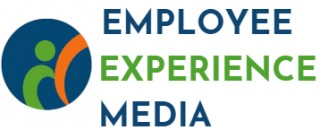
Understanding the Power of Recognition
The Impact of Recognition on Employee Engagement
Recognition plays a pivotal role in shaping a positive work environment and enhancing employee engagement. When employees feel appreciated for their hard work and contributions, it boosts morale and fosters a culture of appreciation. This, in turn, leads to increased productivity and a more cohesive team dynamic.
Employee recognition can take many forms, from a simple shoutout in a team meeting to a more formal acknowledgment through a company-wide message. The key is to ensure that recognition is genuine and timely, allowing team members to feel valued and motivated.
Why Shout Outs Matter
Shout outs, whether delivered through a Slack channel, Microsoft Teams, or a dedicated shout board, are an effective way to provide social recognition. They offer a platform for peer recognition, enabling employees to acknowledge each other's efforts in real time. This not only strengthens team bonds but also encourages a culture of continuous appreciation.
Incorporating regular shout outs into your company culture can transform the work environment, making it more positive and inclusive. It allows employees to see their contributions being recognized, which can significantly enhance their engagement and commitment to the organization.
For more insights into how recognition can impact your work culture, explore our article on celebrating a decade of dedication.
The Role of Work Channel Group Shout Outs
The Impact of Collective Praise within a Team Environment
Work channel group shout outs have changed the landscape of employee recognition by emphasizing the collective sense of belonging and appreciation within a company. Rather than focusing solely on individual achievements, these shout outs highlight the value of collaborative efforts and strengths found within a team. Shout outs on platforms like Slack or Microsoft Teams bring a unique dynamic to the culture, fostering a sense of community and team-building. Many organizations find that implementing shout outs cultivates a more positive work environment where employees feel their contributions are valued. Recognizing team effort can boost morale and forge stronger bonds among team members. This collective form of appreciation is pivotal in nurturing employee engagement, as it shifts the focus from isolated achievements to shared success. Social recognition plays a vital role in solidifying a culture of appreciation within companies. Shout outs not only boost the morale of those being recognized, but they also inspire others and set a benchmark for positive work behavior. Highlighting teamwork and cooperation through shout outs sends a powerful message about the company's values and commitment to recognizing hard work. One of the best practices for effectively using shout outs includes crafting messages that are specific, sincere, and timely. Appreciating hard work through public shout outs resonates at a deeper level, promoting a culture where peer recognition is as much celebrated as management acknowledgment. Consider exploring creative social media-inspired shout out examples that align with your company culture to maintain relatability. For businesses looking to harness the power of shout outs for enhanced team spirit and collaborative excellence, thoughtful thanksgiving presents for your team can further solidify these bonds. Reinforcing appreciation both on digital platforms and through tangible gestures creates a holistic recognition program that fuels continuous employee engagement.Implementing Shout Outs in Your Organization
Getting Started with Shout Outs in Your Workplace
Implementing shout outs in your organization doesn’t have to be a daunting task. When executed with care and consideration, these simple acts of recognition can significantly elevate your work culture. Whether you use a shout board or engage through digital platforms like a Slack channel or Microsoft Teams, the key lies in creating an inclusive environment for all employees to participate in.- Select Appropriate Platforms: Determine where your team is most active. For remote teams, social media platforms and chat tools such as Slack or Microsoft Teams can be great avenues for employee shout outs. The idea is to choose a medium that seamlessly integrates into your current work environment and encourages social recognition.
- Create a Culture of Appreciation: Set a tone where recognition is an integral part of your company culture. Encourage managers and team members alike to acknowledge the hard work and contributions of their peers. Implementing a regular schedule for shout outs can foster a positive work atmosphere and boost employee morale.
- Develop Clear Guidelines: To ensure fairness and inclusion, establish guidelines for what constitutes a noteworthy accomplishment or effort worthy of a shoutout. From completing a challenging project to demonstrating exceptional teamwork, having clear criteria can prevent potential biases.
- Communicate Effectively: Make sure to communicate the purpose and benefits of shout outs clearly to all employees. Consider hosting a briefing session to get everyone on board, explaining how these initiatives can enhance employee engagement and support team building efforts.
Benefits of Regular Shout Outs
Why Regular Shout Outs Matter
Incorporating regular shout outs into your company culture can significantly enhance employee engagement and morale. When employees feel recognized for their hard work, they are more likely to remain motivated and committed to their roles. This sense of appreciation can foster a positive work environment where team members feel valued and respected.
Boosting Morale and Team Spirit
Regular shout outs contribute to a culture of appreciation, where employees are encouraged to acknowledge each other's contributions. This peer recognition can strengthen team bonds and promote a sense of unity. When team members frequently receive positive messages about their efforts, it boosts morale and encourages a collaborative spirit.
Enhancing Employee Engagement
Employee engagement is closely tied to how appreciated employees feel within their work environment. By implementing consistent shout outs, companies can create a culture where employees are actively engaged and invested in their work. This engagement can lead to increased productivity and a more dynamic team dynamic.
Creating a Culture of Recognition
Regular shout outs help establish a culture of recognition, where appreciation becomes an integral part of the company ethos. This culture can be reinforced through various channels, such as a shout board, social media, or platforms like Slack and Microsoft Teams. By making recognition a regular part of the workday, companies can ensure that employees feel valued and motivated to contribute their best.
Encouraging Continuous Improvement
When employees receive regular recognition, they are more likely to strive for continuous improvement. Knowing that their efforts are noticed and appreciated encourages them to push their boundaries and contribute more effectively to the team. This cycle of recognition and improvement can lead to sustained growth and success for the company.
Overcoming Challenges in Recognition Programs
Addressing Challenges in Recognition Initiatives
Employee recognition through shout outs and appreciation messages plays a vital role in fostering engagement and morale. However, implementing an effective recognition program is not without its hurdles. Here are some common challenges organizations may face, and strategies to overcome them:- Ensuring Consistency: A consistent approach to giving shout outs is essential. Employees should regularly hear appreciation for their hard work and contributions to maintain a positive work environment. Establishing best practices within your team culture, such as setting time periods for recognition, can aid in consistency.
- Combating Perceptions of Favoritism: To prevent the notion of favoritism, all employees must have equal access to recognition programs. Encourage peer recognition, allowing team members to appreciate each other's efforts. Consider using platforms like a slack channel or microsoft teams, where team shout outs can be made public.
- Overloading the Message: Be mindful of not overloading employees with shout examples to a point where these messages lose impact. Quality over quantity is key. Tailor appreciation to the individual or team member's unique contributions, adding personal touches when appropriate.
- Integrating within Existing Company Systems: Integration into existing systems like company social media channels or communication platforms ensures the recognition is seen by all. Utilize whatever platforms your team already uses, be it Slack or another tool, to keep recognition messages flowing.
Measuring the Impact of Shout Outs
Assessment and Feedback Loops for Continuous Improvement
Measuring the impact of shout outs is essential to ensure the effectiveness of your recognition programs. It's not just about counting the number of shout outs given or received; it's about understanding how these actions influence your work culture and employee engagement. To effectively gauge their impact, consider the following approaches:- Quantitative Metrics: Track the frequency of shout outs in your chosen platforms, such as a Slack channel or a dedicated shout board. Analyze patterns in employee engagement over time to see if morale and productivity increase alongside these recognitions.
- Qualitative Feedback: Gather feedback from employees routinely through surveys or informal discussions. Ask team members how peer recognition and appreciation affect their work environment and personal satisfaction.
- Performance Indicators: Link shout outs to other performance indicators, such as turnover rates or attendance, to correlate recognition with tangible business outcomes. Understand if employees feel valued and acknowledged for their hard work, leading to higher retention and a positive work atmosphere.
- Social Recognition Visibility: Evaluate the visibility and reach of shout outs on social media or other platforms like Microsoft Teams. Is recognition shared beyond the company, enhancing the brand's social footprint?













